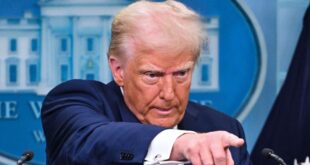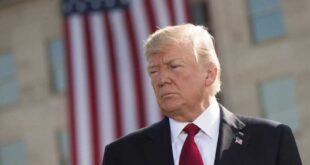Giancarlo Elia Valori
While China is “narrowing” its production lines at national or international levels, a very important signal is the new relationship established between Turkey and the United States to replace China as a supply chain.
Obviously the new “cold war” between China and the United States cannot but create good opportunities for countries such as Turkey which aspire to establish their hegemony over Central Asia and hence to reduce China’s weight both in global and regional trade.
This is the price that Turkey pays happily and without particular problems to the United States for affording its autonomous policy in the Maghreb region, in the Eastern Mediterranean, in the Balkans and in Central Asia, up to supporting the Xinjiang Muslims in China above all to nip the Chinese Belt & Road Initiative in the bud.
Meanwhile Botas, the state-owned distributor of Turkish natural gas, has proposed the construction of a pipeline from its Northern Turkish coast to Nakhicevan, Armenia, so as to reduce Armenia’s imports from Iran and thus slowly distancing from Iran. This is music to American ears.
Therefore, Erdogan’s Turkey also bets on the new “cold war” between the United States and China, thus proposing itself as a third wheel and hence as the basis for the technical and commercial replacement of the production networks from China itself to the area controlled by Turkey.
There is a “but”, however: Turkey has a public deficit of 5.6 billion U.S. dollars (according to April 2020 data), but so far only Chinese capital and funds have arrived to support a 400 million swap between the renmimbi and the Turkish Lira.
A Chinese company bought the Kumport Terminal, on the Sea of Marmara, for 940 million, and in November 2019 Turkey saw the first train arriving from Xi’an, through the Maramay tunnel built and funded by China, which allows to have a non-stop line from China to Europe. An asset not to be overlooked.
The Turkish e-commerce platform, Trendyol, was later acquired by Alibaba but, as all Turkish finance experts say, it would require a further and probably strong devaluation of the Turkish lira which, however, needs substantial “fresh” investment from abroad.
Therefore, it is unlikely for an economy such as Turkey’s to take harsh and definitive action against Chinese interests.
Nevertheless, what does Donald J. Trump’s America really want from China?
The US Presidency’ Strategic Approach to China, published on May 26, 2020, maintains that the threat posed by the CPC to U.S. economic, military and strategic interests, as well as to its “values” is a primary danger.
If we look at the history of such statements, only in the days of the harshest “Cold War” with the USSR were such terms used.
As to economic competition, the United States accuses not the State, but directly the CPC, of overtly “protectionist State policies that have harmed American workers and businesses”.
With damage caused also to global markets, the environment and global trade law. Nevertheless, the sanctions imposed by China on U.S. goods in 2019 were anyway adopted by the WTO, whose negotiation system has been called into question by the United States itself.
In fact, Trump’s America accuses particularly the CPC of “taking advantage of its WTO membership to become the world’s largest exporter, but systematically and harshly protecting its domestic market”.
What is the United States doing? The U.S. real and deep accusation is against the Belt & Road Initiative: the United States interprets this great commercial-strategic operation as an attempt to reshape the world market according to the internal needs of the Communist regime in China.
Moreover, as the United States always maintains, China wants to use not the international networks, but its own courts, as arbitration courts. Is it true or false? Obviously there is the ICC, but other courts of reference are also formally possible, based on UN-type commercial law.
As to the Chinese challenge to American values, the U.S. document states that “China is engaged in an ideological competition with the West”.
The U.S. current idea is based on President Xi Jinping’s old statement (dating back to 2013) whereby China must prepare for a “long phase of cooperation and conflict” with the capitalist West, and it is always stated that “capitalism is dying and Socialism will triumph”. It could not be otherwise considering his Marxist background and ideas.
Obviously so, since President Xi does not certainly come from a salon in Manhattan.
Moreover, the United States never wants China to project itself as a world leader and a country of great global influence. Here again it wants the fight against corruption to stop, since for the United States it was only and exclusively a way to eliminate president Xi’s opponents.
Is it true? Yes, but obviously not only so. One and a half million corrupt people punished by the State, but many of them are real, while others are certainly “enemies” of President Xi’s policy line.
The U.S. Presidency, however, is mainly afraid of the Chinese Military-Civil Fusion and hence of the commercial-security blockade that, in the very long run, could put an end to the traditional U.S. hegemony in the Pacific.
Moreover, the two military games made by the RAND Corporation, about a year ago, concerning a clash in the South Pacific between U.S. and Chinese-Russian forces, demonstrated that the United States would soon be defeated.
Hence, as usual, for the United States once again it is primarily a matter of “protecting the People, the Homeland, the American way of life”. There is great fear for Chinese “propaganda” in the United States, as if it could not be opposed at all. A sweeping analysis was made for Chinese students, the largest foreign community in the United States, and a regulation called Foreign Investment Risk Review Modernization Act was enacted. In January 2020 the United States and China signed also the “Phase One” of a major trade agreement that, according to the United States, is expected to change Chinese business practices significantly. In fact, the agreement provides that the CPC cannot force or orient foreign companies to transfer their technology to keep on producing or selling in China. It also strengthens the rules on the protection of intellectual data in China and finally opens up Chinese markets to U.S. agricultural products, on which it has much relied for its foreign policy.
On the military level, the U.S. Administration (and it would be anyway the same if there were another President) wants a new relationship with “similar” and “friendly” countries so as to counter the Chinese military build-up and develop the Indo-Pacific Strategy Report. In other words, obviously the U.S. block of every “One China Policy”, but hence implicit support to internal factionalism, in Hong Kong and Taiwan, as well as proposing a stop to the Chinese expansion between Xinjiang and Pakistan’s maritime network.
Furthermore, as to the ideological struggle, support for Religious Freedom, the usual fight for “human rights”, the U.S. protections for “minorities’ liberties”. That is all. But we do not think it will be enough.
Certainly, Chinese infrastructural investment is currently designed to competing with the United States and better controlling civil society.
The 55-kilometre bridge going from Hong Kong to Macao, with two artificial islands that allow the road to sink 7 kilometres into a very long underwater tunnel is an eminently political and strategic project.
Obviously, it is in fact a matter of building a Unified Commercial Zone, like the one in New York or Tokyo.
But it is also a matter of creating a strategic control zone to currently protect those coasts, which are currently more economically important than China. However, it is precisely in this area that as much as 4% of the regional and national GDP is dedicated to the construction of quantum computer networks and encryption. The classic civil-military dual objective.
Currently China is already a leading country in quantum communications between Space and Earth. It has already built a Quantum Computing Laboratory in Hefei, Anhui Province, with 10 billion U.S. dollars, while the China-U.S. Economic and Security Commission has established that, as early as 2000, China had bridged the technological gap with the United States with regard to quantum computing.
Is it true? We do not know for sure, but this is certainly where the real economic and intelligence war between China and the United States is developing.
As Krugman maintained in an old article for Foreign Affairs, nations are not corporations and they do not compete one another as companies always do. Nations, however, certainly compete for market outlets, for financial resources, for technologies and for cultural or influence operations.
There is nothing else. Nevertheless, we must never forget that the major countries’ strategic “policy line”, to which Italy adapts in a sheeplike way, envisages variables – also for the small and medium countries – which are not at all negligible.
Also at military level, China’s operations in Ladakh and Tibet are an example of the interest – dating back to Mao Zedong’s times – in using Tibet as “the palm of the Chinese hand” to expand China’s influence throughout South Asia, which is a primary strategic axis.
It is a matter of encircling India and later stable geo-economic blocs are built, just against India, with the Chinese expansion in Myanmar, Sri Lanka and Pakistan.
There must always be a spatial logic – we would classically define as geopolitics – which follows the definition of a country’s primary interest. When it knows how to evaluate it, however, which certainly does not happen currently in Italy.
In any case Tibet would have been India’s first natural defence line, if China had not already taken it as early as 1950.
Hence Tibet, with its strategic “five fingers”, i.e. Ladakh, Sikkim, Nepal, Bhutan and Arunachal Pradesh, will be China’s checkpoint from the South, and we do not believe it will be easily opened by India’s collaboration with other countries, such as the United States.
Without Tibet available, economic, military and intelligence operations against the Belt&Road Initiative will be largely blocked.
Furthermore, President Xi Jinping – who knows the Party and State apparatus very well – has recently launched a campaign of “Security Apparatus Clean-up”. Since November 2012, President Xi Jinping has also marginalised the old leader of the Chinese security apparatus, Zhou Yongkang, directly acquiring an assignment from Politburo and not from Politburo Standing Committee.
Nowadays, China’s security apparatus budget is officially estimated at 183,272 million yuan, equivalent to 26.6 billion U.S. dollars.
While Zhou Yongkang, a man of Hua Guofeng and later of Deng Xiaoping, was arrested in 2012, Hu Jintao himself sent as many as 3,000 Intelligence Service executives to re-education camps.
3,000 executives in a total of 1.97 million officials and operatives.
Nevertheless, this year the turning point has been the establishment of the Safe China Construction Coordinating Small Group, now led by Guo Shengkun.
Later Lin Rui came. President Xi Jinping still trusts him and, however, he is a computer engineer.
Nevertheless, the “clean-up of the security apparatus” in Xi Jinping’s hands will most likely be completed next year.
A new “Yan’an Rectification Movement”, like the one that Mao Zedong promoted.
Rectification campaigns, collection of Xi Jinping’s sayings to “set the policy line”, with the collection of the “four consciences” (ideology, the whole country, principles and policies) and the four trusts (Socialism with Chinese characteristics; trust in a system that proposes the nature of Chinese Socialism; trust in its own culture and values).
Hence this will be the intellectual and operative scenario with which Xi Jinping will fight against the United States. A fight which will not be easy, but not even with a predictable result.
GIANCARLO ELIA VALORI
Honorable de l’Académie des Sciences de l’Institut de France
President of International World Group
 Geostrategic Media Political Commentary, Analysis, Security, Defense
Geostrategic Media Political Commentary, Analysis, Security, Defense





